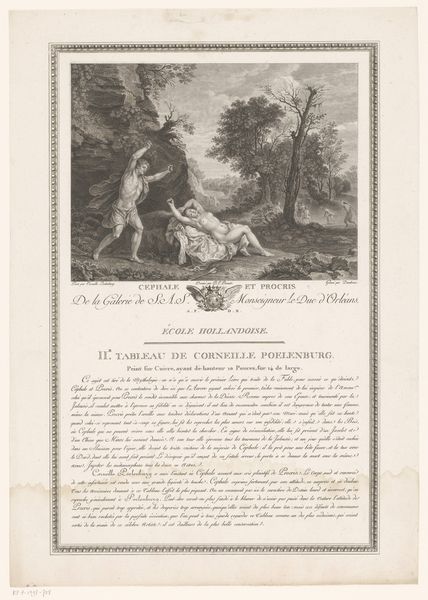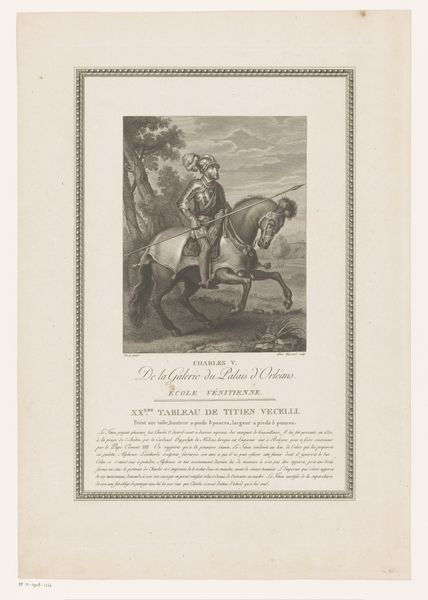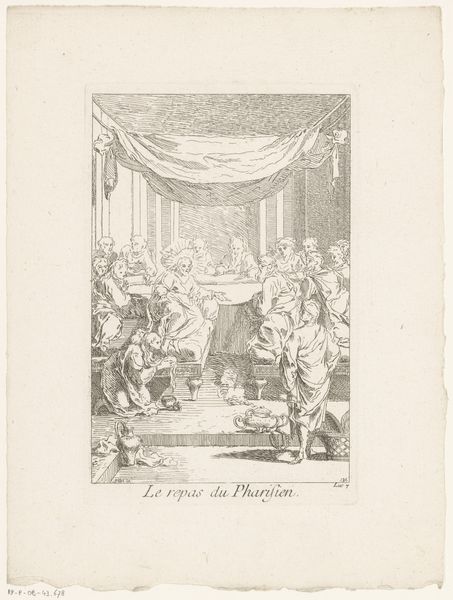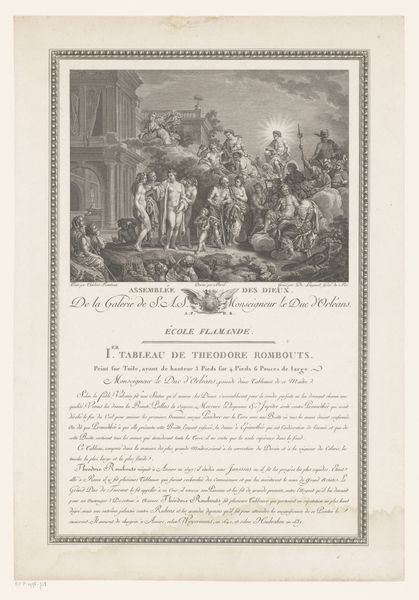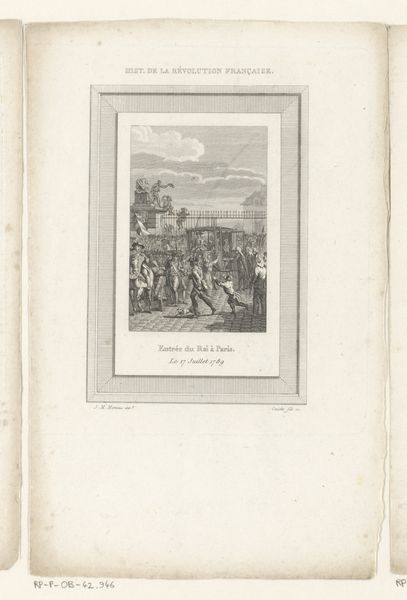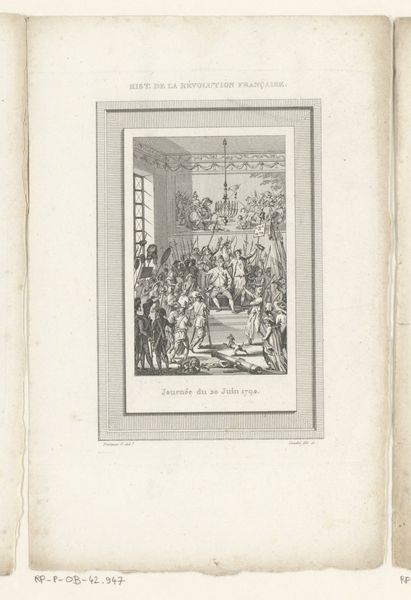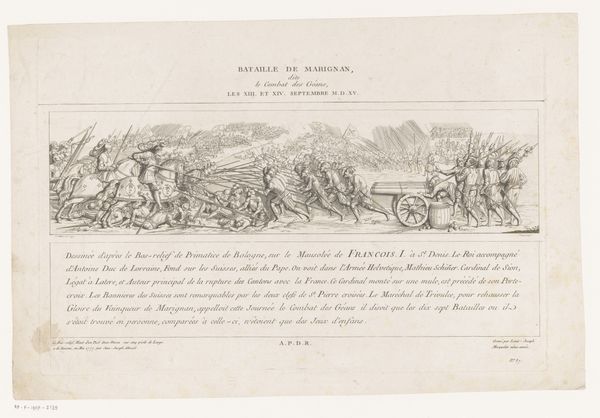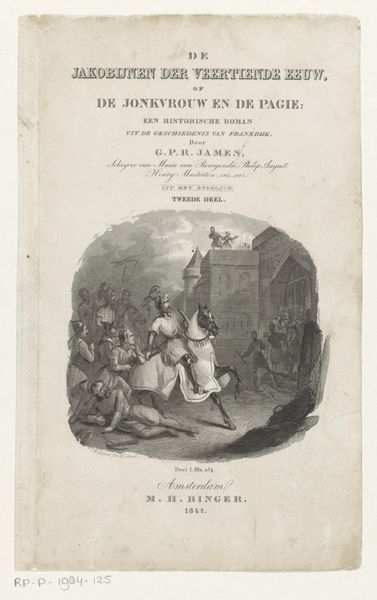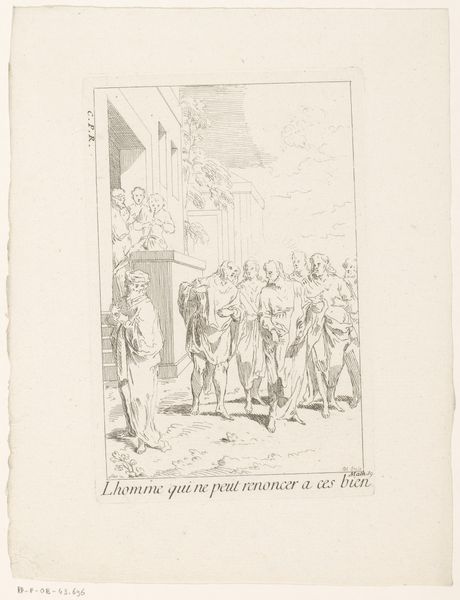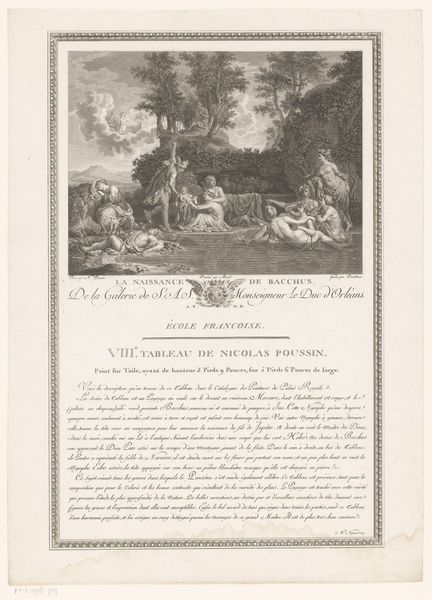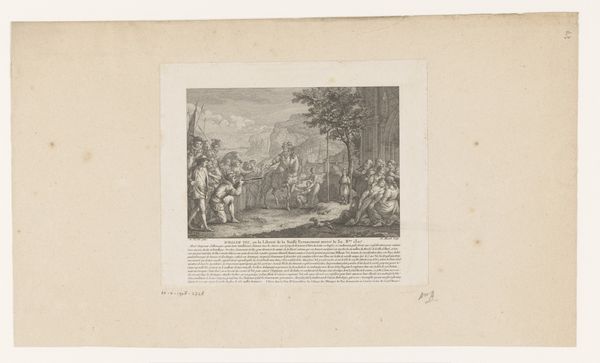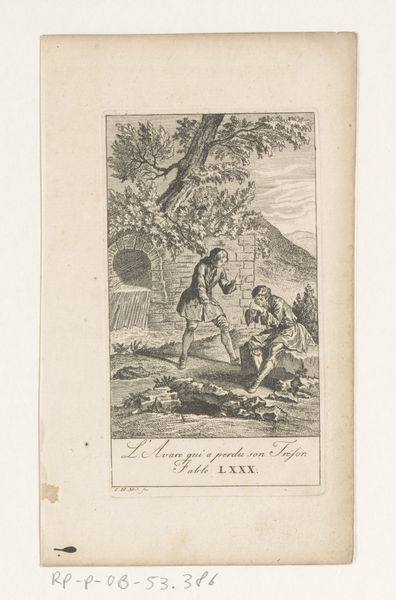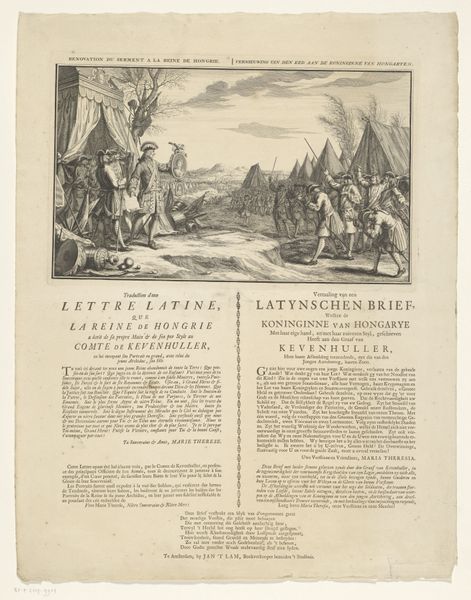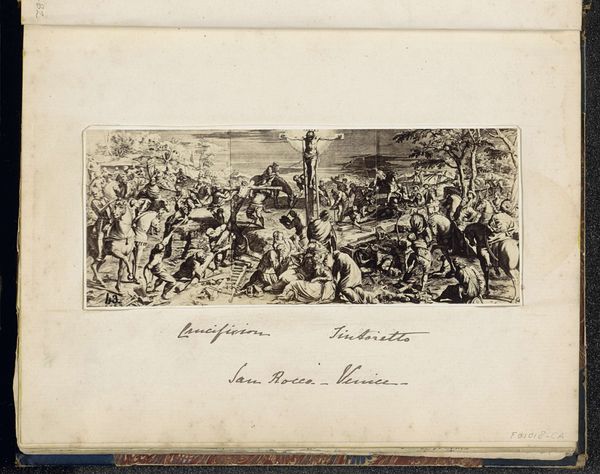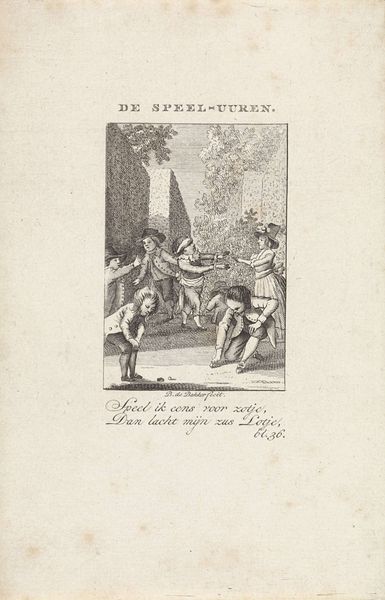
print, engraving
#
portrait
#
neoclacissism
#
narrative-art
# print
#
book
#
old engraving style
#
classicism
#
history-painting
#
academic-art
#
engraving
Dimensions: height 251 mm, width 192 mm
Copyright: Rijks Museum: Open Domain
Editor: This engraving, "Bevolking knielt voor edelman met kind op paard" by Benoit Louis Prevost, is from 1785. It feels incredibly formal, like a scene from a play frozen in time. I'm curious about what story it’s trying to tell. What do you see in this piece beyond just the surface narrative? Curator: It’s an excellent point to consider beyond just the ‘frozen scene.’ Note the print medium. This engraving was designed for mass reproduction, likely as an illustration for a book as indicated in the composition, “Histoire de la Maison de Bourbon.” The choice of engraving is crucial; it suggests a desire to disseminate a particular image and ideology widely, specifically ideas around the aristocracy for common consumption. How might this material reality—the means of production—influence our understanding of the kneeling figures in the foreground? Editor: I see what you mean. The act of making many copies of this image, showing the nobility on horseback and the commoners kneeling, reinforces a social hierarchy. So the material—the print—is less about art, and more about social structures. Curator: Exactly! Consider also the labor involved in creating the engraving itself. Artisans, not necessarily of noble birth, are essential in crafting this visual propaganda. What tensions might exist between the hand that makes the image and the subject it depicts? Are we, in a way, looking at a form of skilled labor being used to legitimize power structures? Editor: That’s fascinating. I hadn't thought about it in terms of the labor involved. It flips my understanding of the image – instead of just seeing a historical scene, I see a process, and a commentary on the people making the art in service of a system. Curator: And how consumption comes into play: where, when and for whom are these printed images used? How is the narrative shaped (or possibly even contested) in different settings? Now we might move away from the static tableau and delve into the very dynamic landscape of its making and distribution. Editor: So, analyzing the material and its production gives us insight into the power dynamics of the time. It changes how I will approach similar works in the future! Curator: Precisely. Considering the labor, materials, and intended audience unlocks a richer understanding.
Comments
No comments
Be the first to comment and join the conversation on the ultimate creative platform.
